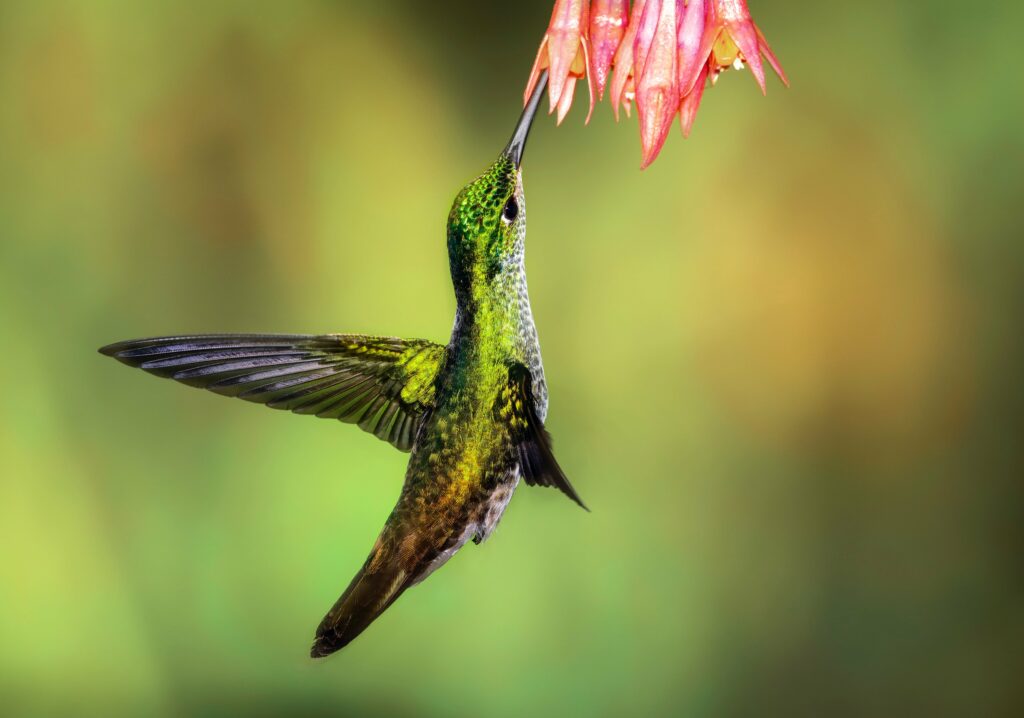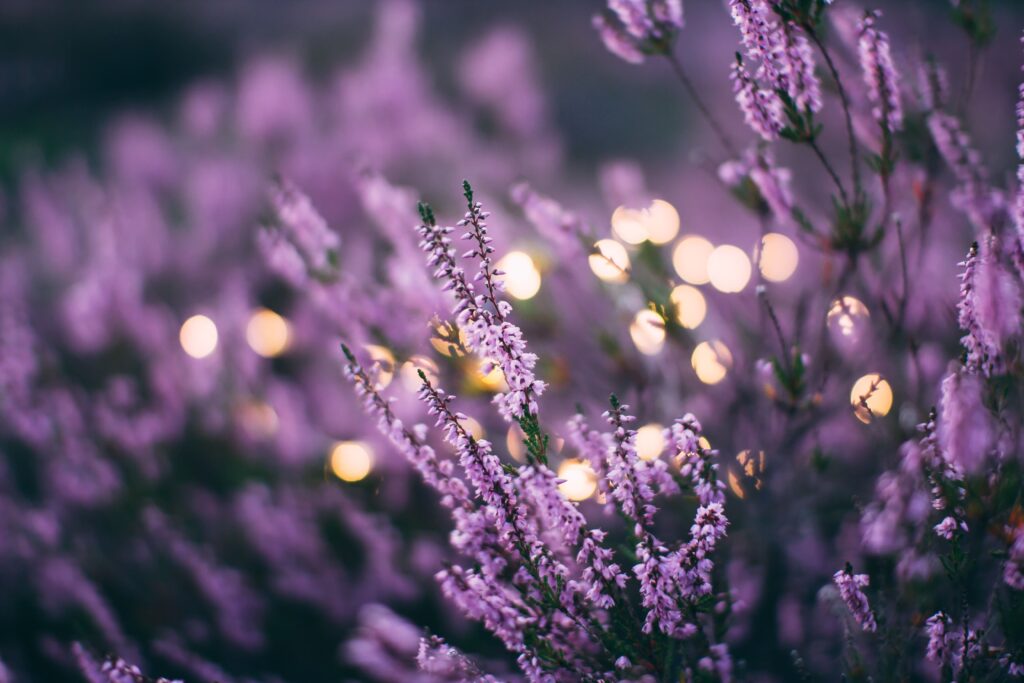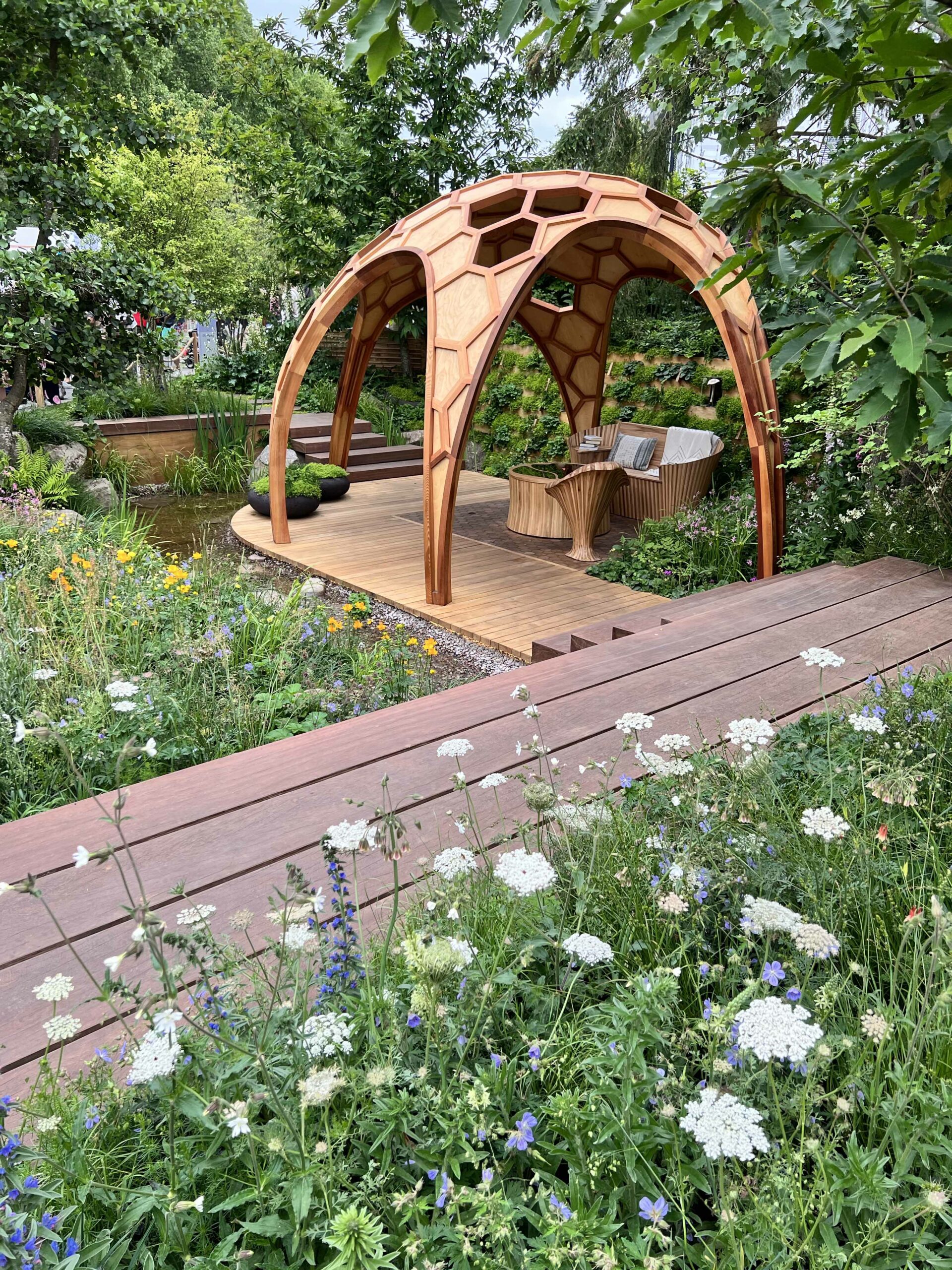Blog
Do the plants used in our favourite Role Playing Games (RPGs) have real-world value today?
Role-playing games have always been beloved by gamers, but they’ve surged in popularity in recent years. For many, lockdown was the perfect opportunity to spend time in front of a screen, with 62% of adults playing some form of video game in 2020. First-time gamers said that RPGs provided an accessible entry point into gaming and an escape from the monotonous isolation of Covid-19.
The best RPGs totally immerse the player in a fictional world through astonishing attention to detail, clever character death and inclusion of mundane day-to-day activities, such as the need to eat, heal, and craft weapons. Many of the most popular games feature intricate crafting systems, using real-world herbs and plants as ingredients in potions, oils and spells. We decided to explore some of the plants used in three immersive RPGs – The Witcher 3: Wild Hunt, Red Dead Redemption 2 and The Elder Scrolls V: Skyrim – and their use in our world today.
The Witcher 3: Wild Hunt
Bryonia
In-game properties
In The Witcher 3: Wild Hunt, bryonia is used in alchemy and thrives in desolate wastelands. It’s needed for the crafting of potions, such as the forktail decoction, certain varieties of draconid oil, dragons dream and hybrid oil, and griffin decoction. It is also needed to craft Superior Thunderbolt, Enhanced White Raffards Decoction, Superior White Raffards and Vermilion. In the quest Va Fail, Elaine, Geralt must use bryonia to craft the “Decoctions of the Grasses” to free another character, Uma from his spell – the same mixture is used during the infamous “Trial of the Grasses”.
Sample recipe: Enhanced draconid oil
Properties: Enhanced draconid oil grants the user +25% attack power against draconids when applied. Throughout the game, protagonist Geralt is tasked with fighting a number of draconids, including Basilisks, Cockatrices, Wyverns and Shriekers. Defeating draconids can be tricky, particularly at higher levels of the game. Both the enhanced and superior draconid oil provide crucial relief.
Required ingredients
- Bryonia
- Bear fat
- Draconid oil
- Cockatrice stomach
- Nekker warrior’s liver
- Moleyarrow
- Arenaria
Bryonia in the real world
Bryonia is native to western Eurasia, North Africa, South Asia and the Canary Islands. The only English species, known as B. dioica, or white bryony, can often be found growing in rural hedgerows throughout the UK. This variety of bryonia is particularly beautiful, with delicate white petals and a vibrant green stem. During the summer, its flowers transform into poisonous red berries. They are classified as perennial and tendril climbing.
Medicinal properties
Bryonia can be used in plant based-homoeopathic remedies. Studies suggest that, if used correctly, bryonia can alleviate constipation and relieve fluid retention. It is an emetic and can be used to induce vomiting. In the past, it has even been used to treat chronic conditions such as liver disease and cancer. Bryonia has a thick root, which can be ground into powder or distilled into gel capsules which can be consumed orally. Bryonia should only be used under the guidance of a qualified physician or plant-based homoeopathic expert. Take care when harvesting bryonia, as its berries are poisonous, and should never be eaten. Over-consumption of the root may cause fatigue, shortness of breath and dizziness.
How do I grow it?
Bryonia naturally occurs in hedgerows and woods, but may also be grown in gardens. It prefers well-drained, rich soils, and is propagated by seeds. It does not need to be pruned and is generally pest and disease-free.
Honeysuckle
Honeysuckle is an important plant in The Witcher 3: Wild Hunt. An alchemy ingredient required for the successful preparation of a number of potions, oils and dyes, honeysuckle may be found growing wild throughout the game. It can also be purchased from herbalists. Gamers will need honeysuckle to craft Enhanced Moon Dust, Ancient Leshen Decoction, superior elements oil, and Troll Decoction, among other things. Honeysuckle is an important ingredient in Blood and Wine, the game’s second DLC. In this DLC, mutagens, which require honeysuckle, can be crafted at Geralt’s vineyard.
Sample recipe: Enhanced Moon Dust
Properties: Enhanced Moon Dust temporarily prevents monsters from shifting form, thanks to the presence of small silver splinters. One such monster is the Doppler, a dangerous shapeshifter which can transform into any beast that they have previously encountered. Enhanced moon dust may also be used to craft superior moon dust.
Required ingredients:
- Honeysuckle
- Stammelford’s dust
- Moon dust
- Quicksilver solution
- Sulfur
- Hop umbels
- Blowball
Honeysuckle in the real-world
Honeysuckle is prevalent throughout the UK and is a common feature of our woodlands and hedgerows. Traditionally, honeysuckle was believed to bring good luck and discourage demonic entities. Symbolic of happiness, affection and love, climbing honeysuckle is synonymous with quintessentially English cottage gardens.
Medicinal properties
The seeds, berries, flowers and leaves of honeysuckle can be used for medicinal purposes. Honeysuckle contains antioxidants such as quercetin as well as a wealth of valuable essential oils. Quercetin can alleviate inflammation and allergy symptoms. It can also reduce blood pressure. Honeysuckle is commonly used to remedy indigestion, viral infections and the common cold. Honeysuckle is also extremely important for the survival of delicate ecosystems, as it attracts butterflies, bumblebees and moths. Birds feed on honeysuckle berries, which are toxic to humans, during late summer and early autumn.
How do I grow it?
Cultivate climbing honeysuckle in moist, well-drained soil. Honeysuckle prefers partial shade, with roots sheltered. The stem, meanwhile, should face the sun if possible. Make sure to provide a sturdy frame to encourage regimented growth. A trellis or wire frameworks well. Deciduous honeysuckles should be planted in late winter. Evergreen honeysuckles, meanwhile, should be planted during autumn or spring. Honeysuckles require regular watering and should feeding with a general-purpose fertiliser in spring. They should be pruned after flowering.
White myrtle
In-game properties
In The Witcher 3: The Wild Hunt, only the petals of the white myrtle are used. White myrtle petals, which can be harvested through wild-growing plants throughout the game, are key alchemy ingredients and are needed to craft many decoctions, potions, antidotes and oils. Superior Swallow, Superior Blizzard, and Dwarven spirit are just a few examples. The tattoo Geralt unwillingly receives in the quest hung over can be removed with a mixture made from white myrtle petals by Triss.
Sample recipe: hybrid oil
Properties: Hybrid oil provides an additional 10% attack power against hybrids. Hybrids are a type of monster common throughout the Witcher 3: Wild Hunt. Griffins, Eryinia, Harpies and Sirens are all classified as hybrids. Players encounter a particularly ferocious griffin early on in the game when completing the quest “The Beast of White Orchard”.
Ingredients:
- White Myrtle Petals
- Dog Tallow
White myrtle in the real-world
“White myrtle”, as it’s called in The Witcher 3: Wild Hunt, is actually known as common myrtle. This versatile shrub is evergreen, with aromatic leaves and white, star-shaped flowers. Common myrtle is native to the Mediterranean region but is now cultivated throughout the south of England, and is strongly associated with Germany. It is frequently referenced in ancient mythology and in the Bible.
Medicinal properties
The leaves, branches and fruit from the common myrtle plant can be used to make herbal medicine. Scientific studies are limited, but advocates of the plant say that myrtle has a positive effect on lung infections, whooping cough, and even tuberculosis!
Red Dead Redemption 2
Ginseng
In-game properties
There are two distinct varieties of Ginseng featured in Red Dead Redemption 2; American Ginseng and Alaskan Ginseng. Both varieties have large palmate leaves and clusters of vivid red berries. American Ginseng has slightly smaller clusters of berries. Ginseng is fairly common in the game, and frequent collection can earn players the “picked to perfection trophy” in Red Dead Online. It usually grows in moist areas and shady forests. It is a crucial ingredient in health cures, miracle tonics and horse medicine.
Sample recipe: Potent Health Cure
Properties: The potent health cure fully restores health and fortifies health cores moderately. It is particularly important during combat or being chased by a hoard of bounty hunters – when rapid healing is crucial. The potent health cure can be purchased from doctors, but thrifty players will prefer to craft it at a campfire.
Required ingredients
- 2x American ginseng/american ginseng
- 1x Yarrow
Ginseng in the real-world
Ginseng has been used in medicine for centuries, particularly in Chinese and Native American culture. It is a slow-growing plant with long, fleshy roots. Ginseng thrives in cooler climates. It is commonly found in Canada and the US, Northeast China and throughout the Korean Peninsula. Some ginseng prefers warmer weather. South China ginseng, for example, can be found in Southwest China and Vietnam. It has yellow-green flowers and large, palmate leaves. The plant is cultivated for its roots and is endangered in the wild.
Medicinal properties
The medicinal properties of Ginseng vary depending on the variety. American Ginseng, for example, can work as a relaxing agent. Asian ginseng, meanwhile, is used to invigorate. Ginseng contains ginsenosides and gintonin. Ginesenosides have antioxidant and anti-inflammatory properties. Studies demonstrate that Korean red ginseng is effective at alleviating eczema. Ginseng can also improve memory and mood, and boost the immune system.
How can I grow it?
Ginseng is fairly easy to grow and can be extremely rewarding. It requires nearly total shade and absolutely no direct sunlight. Try planting it near mature, deciduous trees, copying natural woodland as much as possible. Use deep, loose soil. The soil should have a high organic content. When harvesting ginseng, make sure to protect the roots. Gently wash off any excess dirt and place the roots in a warm room. Turn them daily. Make sure to consult a herbal specialist or qualified professional before using any herbal products.
Hummingbird sage
In-game properties
Hummingbird Sage grows in Lemoyne, in West Elizabeth, and along the banks of the Kamassa River, which runs through New Hampshire. It can be sold or used in crafting. Hummingbird Sage is common and relatively easy to spot. It has a bright white leaf and deep purple flowers. Players must collect 12 Hummingbird Sage flowers to complete rank 7 of the Survivalist Challenge, but beware – this pretty plant normally grows in areas with a high predator presence. Bears, cougars, bobcats and wolves roam the land around Tall Trees where the herb is particularly prevalent.
Sample recipe: Potent bitters
Properties: Hummingbird sage can be eaten from the stem without need for cooking, but is more potent when used alongside other herbs in crafting processes. Try combining it with burdock root to craft special or potent bitters. Both bitters increase stamina level.
Required ingredients:
- 1x Sage
- 1x Burdock Root
Hummingbird sage in the real world
Beloved for its beautiful rose-pink blossoms and intoxicating scent, Hummingbird sage is often used to decorate walls and garden borders. This California native is prevalent along the coast, growing from Orange County to Napa Valley. Hummingbird Sage can grow up to three-foot and blooms throughout spring and into summer.
Medicinal properties
Hummingbird Sage can be harvested and made into tea. Tea can be made using both fresh and dried leaves and tastes surprisingly nice. Try stirring in sugar or honey to add sweetness. Hummingbird sage has decongestant and antimicrobial. It’s also great for sore throats.
How do I grow it?
Hummingbird Sage can be grown in chalk, loam and sand. It is versatile and can be grown in soil with acid, alkaline and neutral pH. Soil should be moist and well-drained. It grows best with full sun, but can also tolerate partial shade. Hummingbird Sage is generally pest and disease-free but should be lightly pruned. Pruning prolongs flowering.
Skyrim
Lavender
Lavender grows on Tamriel’s grassy plains. It is common in Whiterun. It is also sold by alchemists and can be looted from mages. If you visit the Blue Palace, you’ll find an enormous sprig hidden in a vase behind Jarl Elisif the Fair’s throne. Lavender has a plethora of uses and can be crafted into potions to resist magic, fortify stamina, damage opponents and fortify magical abilities. It is one of the few plants in Skyrim that can be used in cooking.
Properties of lavender
Primary effect – Resist magic
Secondary effect – Fortify stamina
Tertiary effect – Ravage magicka
Quaternary effect – Fortify conjuration
Lavender in the real world
Lavender, which is native to the Mediterranean, is an evergreen plant. Often referred to as the “queen of medicinal plants”, it is renowned for its calming scent and has been used throughout history. The ancient Egyptians used lavender blooms during the mummification process. Tutankhamun’s tomb, in fact, still contains traces of this beloved plant. The Romans, meanwhile, used oil made from lavender to make perfumes. Lavender’s name is derived from the Latin “lavare”, which means “to wash”.
Medicinal properties
Lavender, when used as an essential oil, can relax muscles. It can also be used to relieve anxiety, insomnia, depression and pain. Some studies suggest that Lavender can even mitigate the effects of dementia. It also has antibacterial and antifungal properties and can be used to treat bruises, burns and wounds.
How do I grow it?
Lavender should be planted as soon as possible after seeds are bought. It’s easy to grow and is best planted in spring. Most types of lavender are hardy, but avoid planting in cold, damp ground. Dig over free-draining soil and remove weeds prior to planting. Try using it as a border around other flowers.
Juniper berries
If you’re looking for Juniper Berries in Tamriel, try searching along The Reach. Juniper appears as a short green tree with light blueberries. It is most commonly found by the river between Karthwasten and Sundered Towers. They’re mostly indigenous to The Reach and surrounding areas, but may be found throughout Tamriel. They can be crafted for fire resistance, archery ability, health regeneration and to slow the regeneration rate of victims. Juniper is also present in some mead.
Properties of Juniper
Primary effect – Weakness to fire
Secondary effect – Fortify marksmen
Tertiary effect – Regenerate health
Quaternary effect – Damage stamina regen
Juniper in the real-world
Junipers are striking, hardy and incredibly versatile. They are evergreen conifers and can live for 200 years. It can grow around the world. Juniper foliage is constantly changing, reflecting changing seasons and the ageing of the tree. Junipers can be bought in different colours, ranging from delicate blue hues to glowing gold.
Medicinal properties
Juniper berries are astonishingly high in powerful plant compounds and nutrients, and their extracts and essential oils are often used in herbal medicines. Juniper wood can also be used medicinally. Juniper is commonly used to treat heartburn and urinary tract infections. Juniper berries are thought to contain anti-inflammatory compounds.















